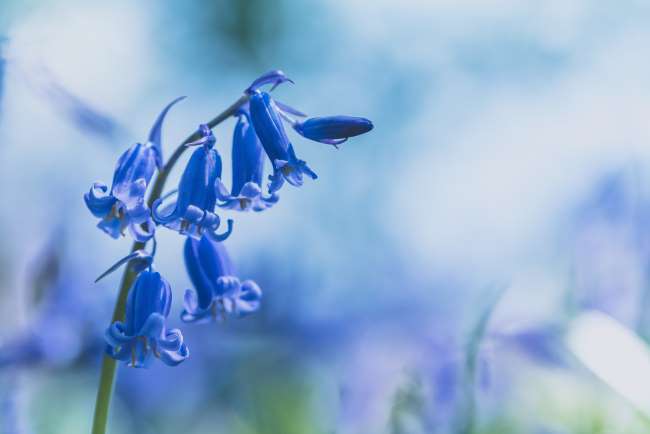Native bluebells


There are two species of bluebell found in the United Kingdom. Native or British bluebell and non-native Spanish bluebell. Cross-breeding between the two species means you may spot flowers which combine traits from both.
The easiest way to tell the difference between native and non-native bluebells is to look at the colour of the pollen. If it is creamy-white then the bluebell is native. If it is any other colour such as pale green or blue then it’s not native.
These other characteristics will also help you to tell the difference:
Native Hyacinthoides non-scripta
Native bluebells
Pollen cream-white colour
Deep violet-blue. A genetic mutation occasionally causes white flowers
Flower stem droops or nods distinctly to one side
Almost all flowers are on one side of the stem, hanging down to one side
Flowers are a narrow, straight-sided bell with parallel sides
Petal tips are reflexed (curl back)
Flowers have a strong, sweet scent
Spanish Hyacinthoides hispanica
Spanish bluebells
Spanish bluebells
Pollen green or blue
Pale to mid-blue, often also white or pink
Flower stem is stiff and upright
Flowers are usually all the way round the stem, with the flowers sticking out
Flowers are a wide open, almost cone shaped bell
Petal tips flare slightly outwards
Flowers have little or no scent at all
Why are non-native bluebells a threat?
Spanish bluebell is a threat to our native species because they readily cross-breed resulting in the fertile hybrid Hyacinthoides hispanica x non-scripta.
This is a problem because crossbreeding dilutes the unique characteristics of our native Bluebell, changing future generations forever.
Most bluebells in urban areas are now thought to be hybrids and a study by Plantlife found that one in six broadleaved woodlands contained the hybrid or Spanish bluebells.




